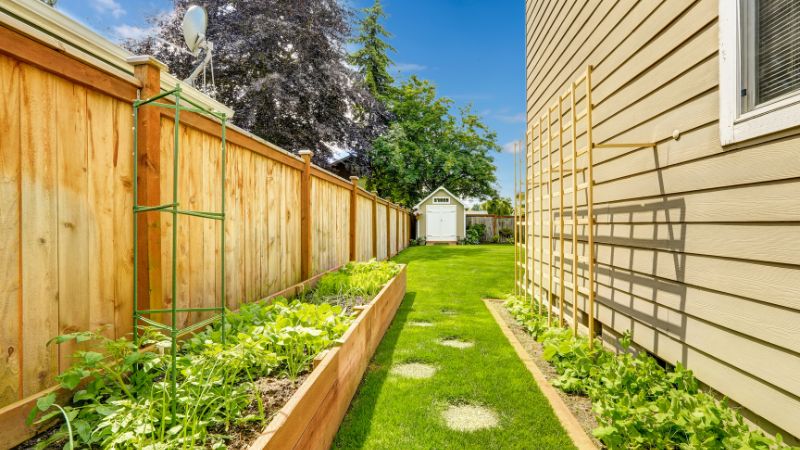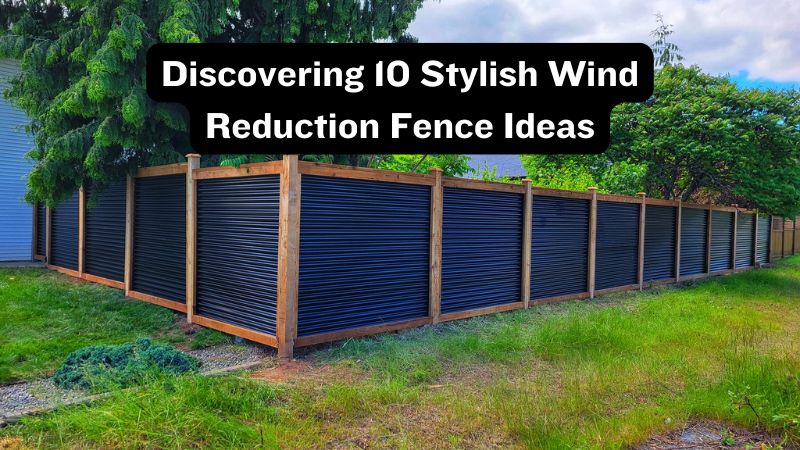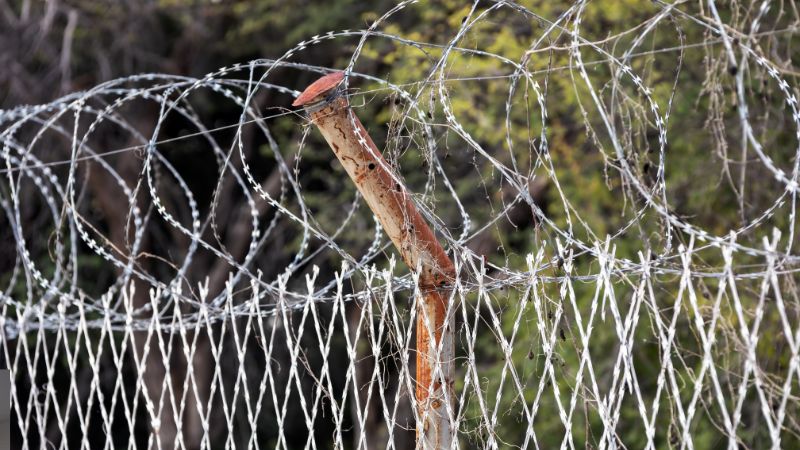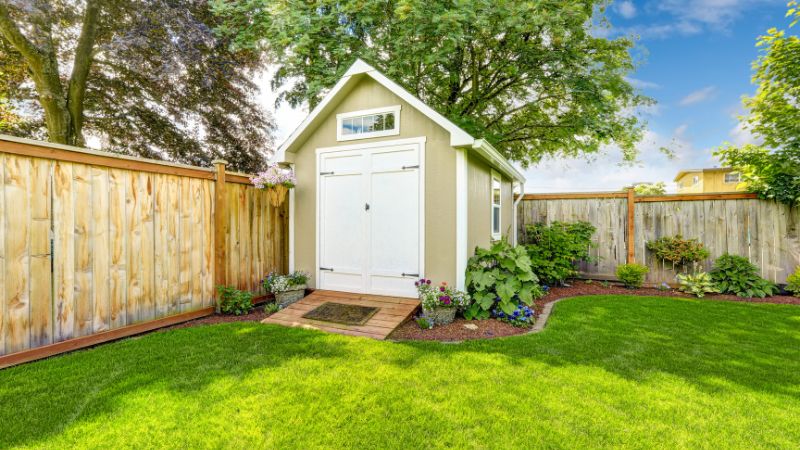Fencing can be a great way to enhance security and define boundaries, but it’s not without its drawbacks. Understanding the disadvantages of fencing is crucial before making a decision for your property. From maintenance concerns to potential aesthetic issues, various factors can impact your choice. In this blog, we’ll explore the ten most common disadvantages associated with fencing, helping you make an informed decision. Whether you’re considering wood, vinyl, or metal, knowing these potential pitfalls will guide you towards the best solution for your needs. Read on to discover what you need to watch out for and how these issues might affect your fencing project.
10 Most Common Disadvantages Of Fencing
1. High Initial Cost

One of the most significant disadvantages of installing a fence is the high initial cost. Fencing materials, such as high-quality wood, vinyl, or metal, can be expensive, and the total cost includes not just the materials but also labor for installation. Additionally, complex designs or larger areas can further increase the overall expense. While some materials offer long-term savings through durability and low maintenance, the upfront investment can be a major consideration for homeowners on a budget. In the process of planning your fencing project, it is essential to take into consideration the initial cost in addition to the long-term benefits and the maintenance requirements.
Also Read:- Decorative Fencing Ideas For Your Fencing Project
2. Maintenance Requirements
Fences, particularly those made from wood or metal, require ongoing maintenance to remain in good condition. Wooden fences may need regular staining or painting to protect against weather damage, while metal fences can be prone to rust and may require periodic treatments. Vinyl fences, while low-maintenance, can still require occasional cleaning to remove dirt and stains. Maintenance can be time-consuming and costly, especially if the fence is exposed to harsh weather conditions. Regular upkeep is necessary to prevent deterioration and ensure the fence continues to perform its intended function.
3. Potential for Damage
Fences can be damaged by a variety of factors, including weather, accidental impacts, and wear and tear. High winds can cause panels to break or posts to lean, whereas severe storms can cause more extensive damage. Animals, such as deer or pets, may also damage the fence by chewing or scratching it. Natural wear and tear can cause structural weakness over time. Addressing these issues frequently necessitates repairs or replacements, which can be inconvenient and expensive. Proper installation and regular inspections can help reduce the risk of damage, but not completely eliminate it.
4. Aesthetic Impact
A property’s aesthetics can be greatly impacted by fencing. A fence may not blend in with the surrounding architecture or landscape, depending on its style and material, which could lessen its overall visual appeal. For example, a tall, solid fence could block views and act as a visual barrier, and a fence that is not in keeping with the home’s style could look out of place. It’s important to pick a fence that complements the style of your property, but doing so might reduce your options. Planning and careful thought are necessary to strike a balance between functionality and aesthetics.
5. Privacy Issues
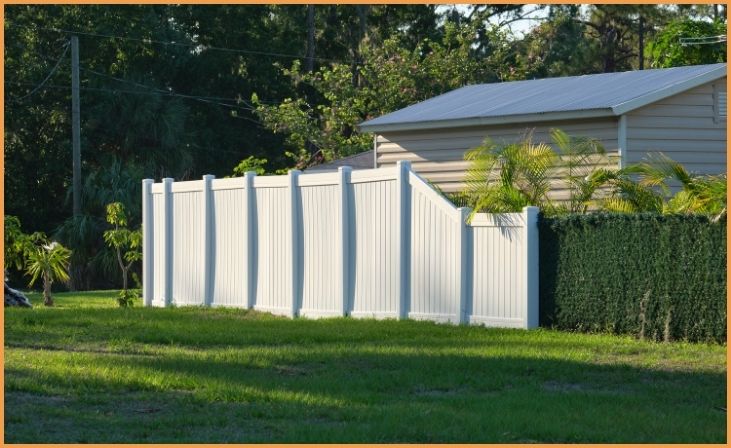
While fences are intended to provide privacy, the level of privacy they offer can vary depending on the type and height of the fence. For example, a picket fence may not offer much privacy compared to a solid panel fence. Additionally, fences that are not high enough or have gaps can still allow neighbors or passersby to see into your property. Privacy fences must be tall and constructed correctly to ensure they effectively block visibility. In some cases, achieving complete privacy might require additional modifications or enhancements, which can increase the overall cost.
6. Legal and Property Restrictions
Before installing a fence, it’s crucial to be aware of local regulations and property restrictions. Many areas have zoning laws, property line agreements, and homeowners’ association (HOA) rules that govern fence height, style, and placement. Failing to comply with these regulations can lead to fines, legal disputes, or the need to remove or alter the fence. Before starting a fencing project, it’s critical to learn about and comprehend any local regulations or restrictions in order to prevent any potential legal problems.
7. Potential for Reduced Property Value
In some cases, fencing can negatively impact property value. This can occur if the fence is poorly constructed, unattractive, or does not complement the property’s overall design. Potential buyers might view an unattractive or poorly maintained fence as a liability or an additional cost. Additionally, overly restrictive or unsightly fences may limit the appeal of your property to prospective buyers. To avoid this issue, ensure that the fence is well-designed, well-maintained, and enhances the property’s overall appeal.
8. Environmental Impact
The environmental impact of fencing can be a concern, especially with materials like wood and metal. Wood fences often involve deforestation or the use of non-sustainable forestry practices, while metal fences can contribute to resource depletion and pollution during manufacturing. Vinyl fences, while made from recycled materials, still involve plastic production, which has environmental consequences. Consider the environmental impact of your chosen materials and explore eco-friendly options to minimize the ecological footprint of your fencing project.
9. Impact on Landscaping
Fencing can interfere with existing landscaping and future gardening plans. Installing a fence might require removing or altering trees, shrubs, or flower beds, which can disrupt the existing garden design. Additionally, maintaining the area around the fence can be challenging, as it may limit access for gardening or landscaping tasks. It’s important to plan the fencing project with consideration for your landscaping to avoid unnecessary damage and ensure that both the fence and garden can coexist harmoniously.
Also Read:- Fence Installation Mistakes To Avoid
10. Security Concerns

While fences are often installed for security purposes, they can sometimes create false security. A fence alone might not be sufficient to deter determined intruders, especially if it’s easy to climb or breach. Additionally, fences can provide a sense of security but may not address other security needs, such as proper lighting or surveillance. Fencing must be used in conjunction with other security measures to properly safeguard your property. To guarantee complete protection, assess your unique security requirements and take into account any extra improvements.
Conclusion
Choosing the right fence involves balancing benefits with potential drawbacks. By understanding the ten common disadvantages of fencing discussed in this blog, you can better assess whether a fence is the right choice for your property. Keep in mind the impact on maintenance, cost, and aesthetics as you make your decision. Ultimately, informed choices improve outcomes, ensuring your fencing solution meets your practical needs and aesthetic preferences. Evaluate these factors carefully to make the most effective decision for your home or business.
FAQs
What are some common maintenance issues with fencing?
Common maintenance issues include rust on metal fences, rotting wood, and staining or fading on vinyl fences.
How can fencing impact property aesthetics?
Fencing can affect aesthetics by potentially clashing with your property’s design or blocking views, which might reduce the visual appeal of your landscape.
